
Dr. James Kildare is a fictional American medical doctor, originally created in the 1930s by the author Frederick Schiller Faust under the pen name Max Brand. Shortly after the character's first appearance in a magazine story, Paramount Pictures used the story and character as the basis for the 1937 film Internes Can't Take Money, starring Joel McCrea as Jimmie Kildare. Metro-Goldwyn-Mayer (MGM) subsequently acquired the rights and featured Kildare as the primary character in a series of American theatrical films in the late 1930s and early 1940s. Several of these films were co-written by Faust, who also continued to write magazine stories and novels about the character until the early 1940s. Kildare was portrayed by Lew Ayres in nine MGM films. Later films set in the same hospital featured Dr. Gillespie. Ayres returned to voice the Kildare character in an early 1950s radio series. The 1961–1966 Dr. Kildare television series made a star of Richard Chamberlain and gave birth to a comic book and comic strip based on the show. A short-lived reboot of the TV series, Young Doctor Kildare, debuted in 1972 and ran for 24 episodes.

Young Dr. Kildare is a 1938 American drama film directed by Harold S. Bucquet and starring Lew Ayres as Dr. James Kildare, an idealistic, freshly graduated medical intern, who benefits greatly from the wise counsel of his experienced mentor, Dr. Leonard Gillespie. The film was based on a story and characters created by author Frederick Schiller Faust, writing as Max Brand.

Laraine Day was an American actress, radio and television commentator, and former Metro-Goldwyn-Mayer (MGM) contract star. As a leading lady, she was paired opposite major film stars, including Robert Mitchum, Lana Turner, Cary Grant, Ronald Reagan, Kirk Douglas, and John Wayne. As well as her numerous film and television roles, she acted on stage, conducted her own radio and television shows, and wrote two books. Because of her marriage to Leo Durocher and her involvement with his baseball career, she was known as the "First Lady of Baseball". Her best-known films include Foreign Correspondent; My Son, My Son; Journey for Margaret; Mr. Lucky; The Locket; and the Dr. Kildare series.

Barbara Bedford was an American actress who appeared in dozens of silent movies. Her career declined after the introduction of sound, but she continued to appear in small roles until 1945.

Internes Can't Take Money is a 1937 American drama film directed by Alfred Santell and starring Barbara Stanwyck, Joel McCrea, Lloyd Nolan and Stanley Ridges. McCrea portrays Dr. Kildare in the character's first screen appearance. Metro-Goldwyn-Mayer continued the Dr. Kildare series with Young Dr. Kildare (1938) starring Lew Ayres as Kildare and Laraine Day as a nurse in love with Kildare. The film was released in the United Kingdom as You Can't Take Money.
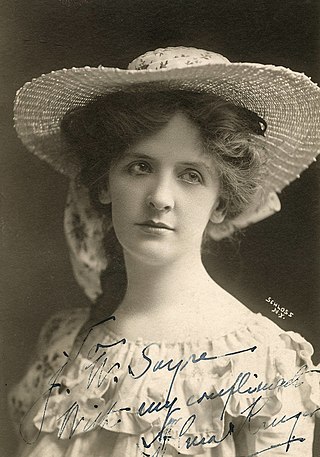
Alma Kruger was an American actress.
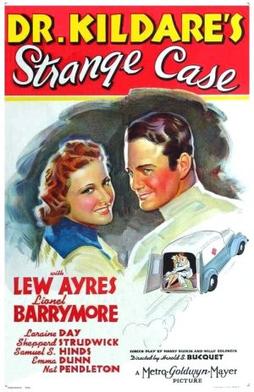
Dr. Kildare's Strange Case is a 1940 American drama film directed by Harold S. Bucquet. This was the fifth of a total of ten Dr. Kildare pictures. Horace MacMahon joined the cast regulars in the series as taxi driver "Foghorn" Murphy.
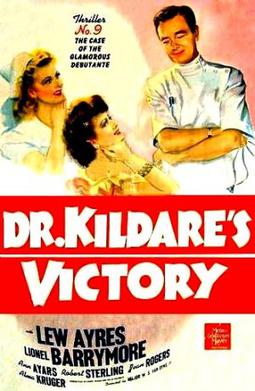
Dr. Kildare's Victory is a 1942 film directed by W. S. Van Dyke. It stars Lew Ayres and Lionel Barrymore. It is the ninth and last of the MGM Dr. Kildare movie series.
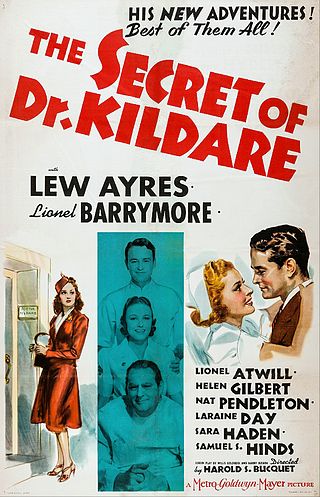
The Secret of Dr. Kildare is a 1939 American film directed by Harold S. Bucquet and produced by Metro-Goldwyn-Mayer. This was the fourth of a total of ten Dr. Kildare pictures, Lew Ayres starred all but the first.

Dr. Kildare Goes Home is a 1940 American drama film directed by Harold S. Bucquet, starring Lew Ayres, Lionel Barrymore and Laraine Day. It is the fifth in the MGM series of nine films with Lew Ayres as Dr. Kildare made from 1938–1942.
Dr. Gillespie's New Assistant is a 1942 feature film from MGM in their long-running Dr. Kildare series. Directed by Willis Goldbeck, it introduced two new doctors, Dr. Randall Adams and Dr. Lee Wong How.

Dr. Kildare's Crisis is a 1940 drama film directed by Harold S. Bucquet, starring Lew Ayres, Lionel Barrymore and Laraine Day. Mary Lamont's financier brother Douglas Lamont is subject to seizures, and it seems that he is suffering from hereditary epilepsy.
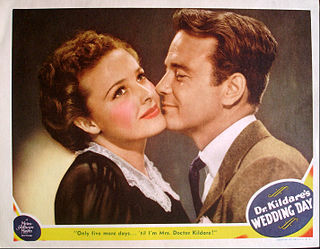
Dr. Kildare's Wedding Day is a 1941 American drama film directed by Harold S. Bucquet and starring Lew Ayres, Lionel Barrymore, and Laraine Day. It is the eighth of a total of nine Dr. Kildare pictures made by the Metro-Goldwyn-Mayer. When MGM decided to move up-and-coming star Laraine Day out of the "Dr. Kildare" series, the studio did so in a startlingly dramatic fashion. Adding extra interest to this film in the Kildare series, Barrymore composed the music credited to the Cornelia Bartlett character, and actor Red Skelton provides comic relief.

Calling Dr. Gillespie is a 1942 drama film directed by Harold S. Bucquet, starring Lionel Barrymore, Donna Reed and Philip Dorn. This was a continuation of the series that had starred Lew Ayres as Dr. Kildare. Ayres, however, had declared conscientious objector status to World War II, and was taken off the film. Kildare's mentor, Dr. Gillespie, portrayed here and in earlier films by Barrymore, became the lead character. In this first Kildare-less entry, Gillespie has a new assistant, refugee Dutch surgeon Dr. John Hunter Gerniede.

Calling Dr. Kildare is a 1939 film in the Dr. Kildare series. Directed by Harold S. Bucquet, it stars Lew Ayres as the young Dr. Kildare and Lionel Barrymore as Dr. Gillespie, his mentor. The second of MGM's series of Kildare films, it introduces Laraine Day as nurse Mary Lamont, the love of Kildare's life.

Three Men in White is a 1944 American comedy-drama film in the Dr Kildare series directed by Willis Goldbeck. It stars Lionel Barrymore, Van Johnson, and Marilyn Maxwell. Ava Gardner has a supporting role.
Dr. Gillespie's Criminal Case is a 1943 film in the Dr. Kildare series. Based on characters created by Max Brand. The third of MGM's Dr. Gillespie series to dispense with the services of Dr. Kildare after Dr. Kildare's Victory (1942).

Between Two Women, made in 1945, was the sixteenth film in the Dr Kildare series. This was the fourteenth of fifteen in which Lionel Barrymore starred as Dr. Leonard B. Gillespie. The film following was Dark Delusion (1947), which was the last in the Dr. Kildare series released by Metro-Goldwyn-Mayer (MGM). This was the last of Van Johnson's character, Dr. Randall 'Red' Adams, also seen in three previous Kildare films.

Dr. Kildare is an NBC medical drama television series which originally ran from September 28, 1961, until August 30, 1966, for a total of 191 episodes over five seasons. Produced by MGM Television, it was based on fictional doctor characters originally created by author Max Brand in the 1930s and previously used by MGM in a popular film series and radio drama. The TV series quickly achieved success and made a star of Richard Chamberlain, who played the title role. Dr. Kildare inspired or influenced many later TV shows dealing with the medical field. Dr. Kildare aired on NBC affiliate stations on Thursday nights at 8:30–9:30 p.m. until September 1965, when the timeslot was changed to Monday and Tuesday nights at 8:30–9:00 p.m. through the end of the show's run.
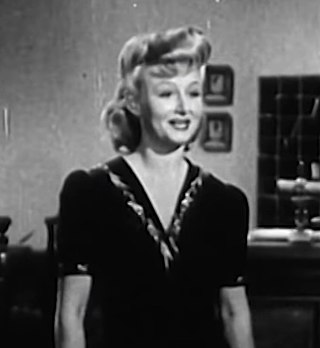
Gladys Blake was an American character actress from the 1930s to the 1950s.


















